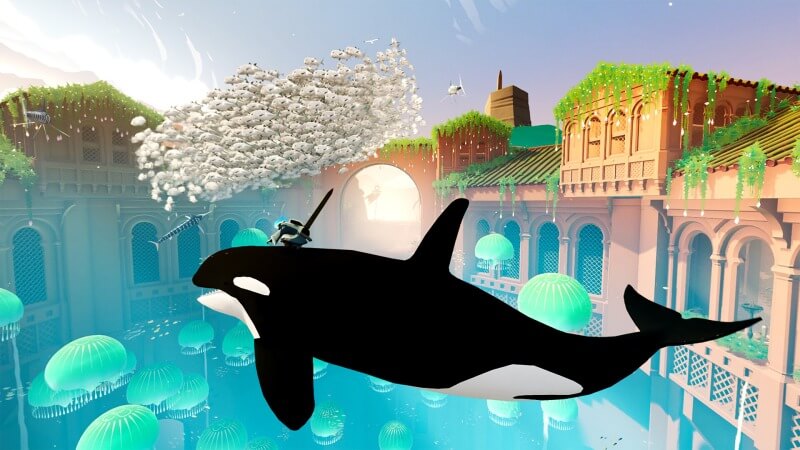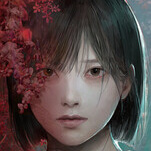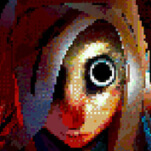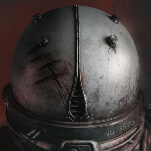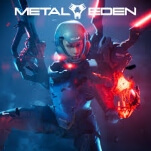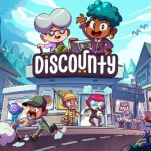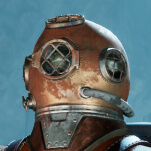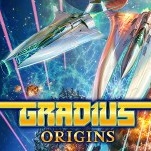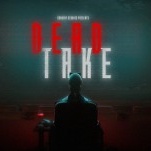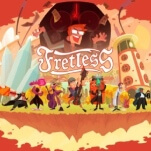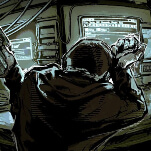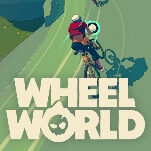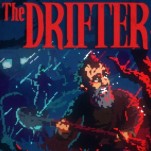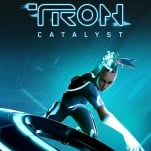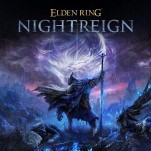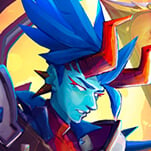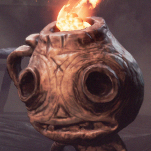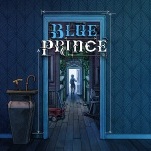Shredding Serenity in Sword of the Sea

In 2012’s Journey, thatgamecompany gave us a timeless, wordless, mythopoetic adventure through the desert with unknowable online friends. In 2016’s Abzû, the former thatgamecompany employees at Giant Squid gave us a timeless, wordless, mythopoetic adventure through the ocean with a shark serving as guide and friend. In 2020’s The Pathless, Giant Squid added words—albeit in an unknowable language—but otherwise it was timeless and mythopoetic and all of that jazz, this time on a wooded island, with a falcon as our friend and active collaborator. And now, in 2025’s Sword of the Sea, Giant Squid returns with a game that references all of its previous work, while exploring the kind of design precepts and aesthetic concepts they’ve been known for since Giant Squid’s founders were still at thatgamecompany. When you find something that works, keep working it, I guess. And the good thing is, it does still work with Sword of the Sea.
The Pathless set itself apart from Abzû and Journey by being a little more openly game-like. You didn’t just explore, but had to dash through the environment and shoot arrows to accomplish your goals. Sword of the Sea ditches the ranged non-combat for, uh, a sword, and then adds an unexpected wrinkle by turning that sword into a vehicle instead of a weapon. The sword is a board—both skate and surf—and you’ll ride it throughout the entire game while trying to bring life back to another one of Giant Squid’s fallen, mysterious worlds.
In Sword of the Sea you glide effortlessly over sea, sand, and snow while trying to turn the lights on across various environments that echo the designers’ earlier games. You start in a Journey-ish desert, where clusters of little clay braziers lie dormant, waiting for you to reignite them by skating in their general vicinity; whenever a new patch is relit, it untaps a hidden water source, restoring the ocean to its former glory in a cascading flourish of aquatic wildlife right out of Abzû. Tony Hawk games might be fun, but they’ve never let you ride on the back of a whale before—and Sword of the Sea does that multiple times.
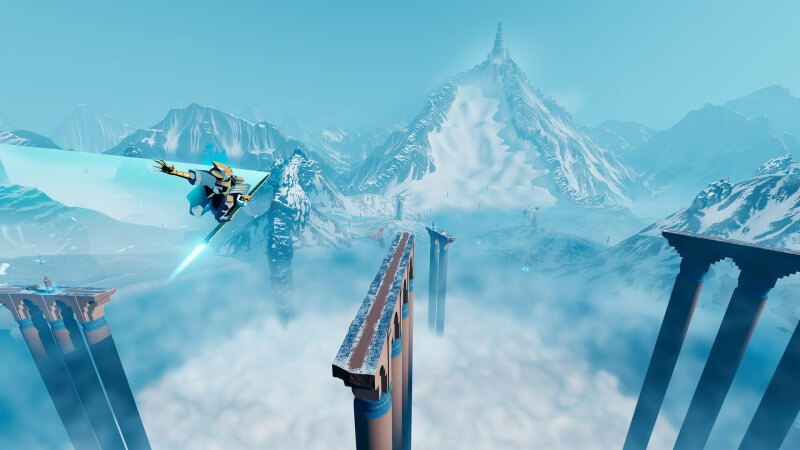
It’s all so esoteric, aiming for mythic status and avoiding specifics in the process. Your character’s name doesn’t matter. Your character’s friend’s name doesn’t matter. Nothing about the world is well-defined, and that’s totally fine, because Sword of the Sea strives for allegory more than anything else. All that matters is that you need to save this world from a disaster that definitely seems ecological, and to do that you ultimately have to quench the bottomless hunger of an insatiable beast fueled by endlessly churning flames.
It’s short. I like short games. Sword of the Sea might somehow be too short though–I wrapped up in barely more than four hours, and I feel like its story, as thinly sketched as it is, could have used another act. It also has a scoring system that feels nothing less than vestigial; for the most part it’s portrayed as an optional, insignificant metric only visible on the pause screen. But there are a few moments where it comes to the fore and you’re tasked with scoring a certain amount of points in a makeshift halfpipe or bowl, and it rattles the immersion the game otherwise aims for. The scoring system becomes more central in the new game plus mode, with the score now appearing on the main screen, and endlessly going up as you just explore this world once again. This really only underscores how totally unnecessary scorekeeping is in Sword of the Sea; it accomplishes nothing, it signifies nothing, it’s exclusively here for players who just need to see the numbers go up, or for Giant Squid’s developers to try out something new. It doesn’t hurt the game in any way, but it is just one big shrug.
-

-

-

-

-

-

-

-

-

-

-

-

-

-

-

-

-

-

-

-

-

-

-

-

-

-

-

-

-

-

-

-

-

-

-

-

-

-

-

-

